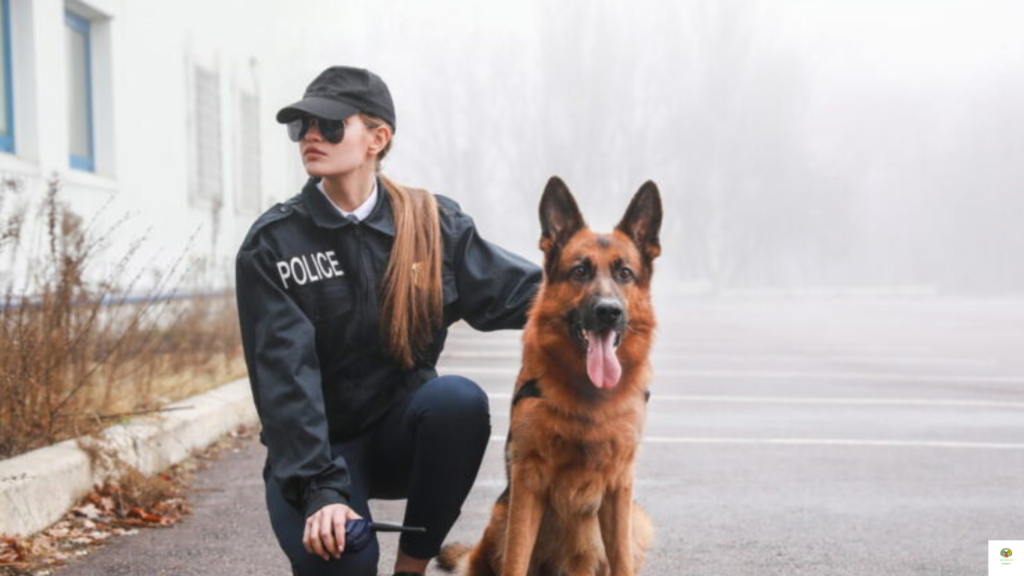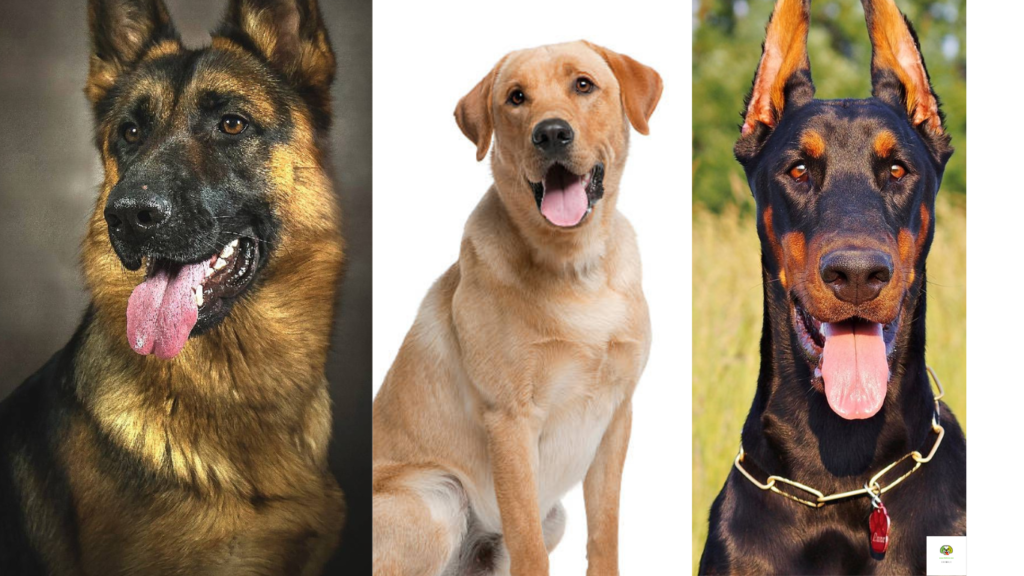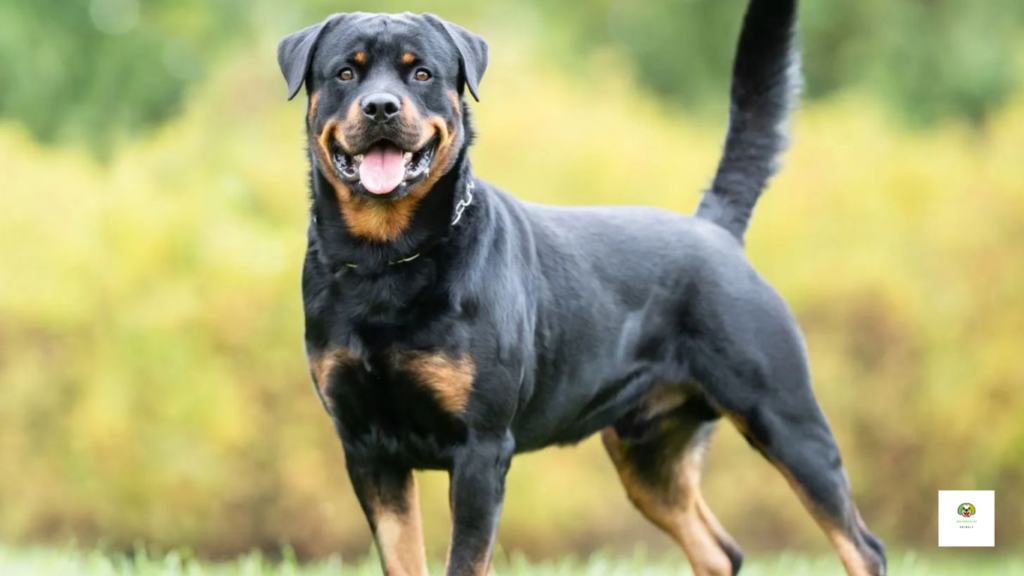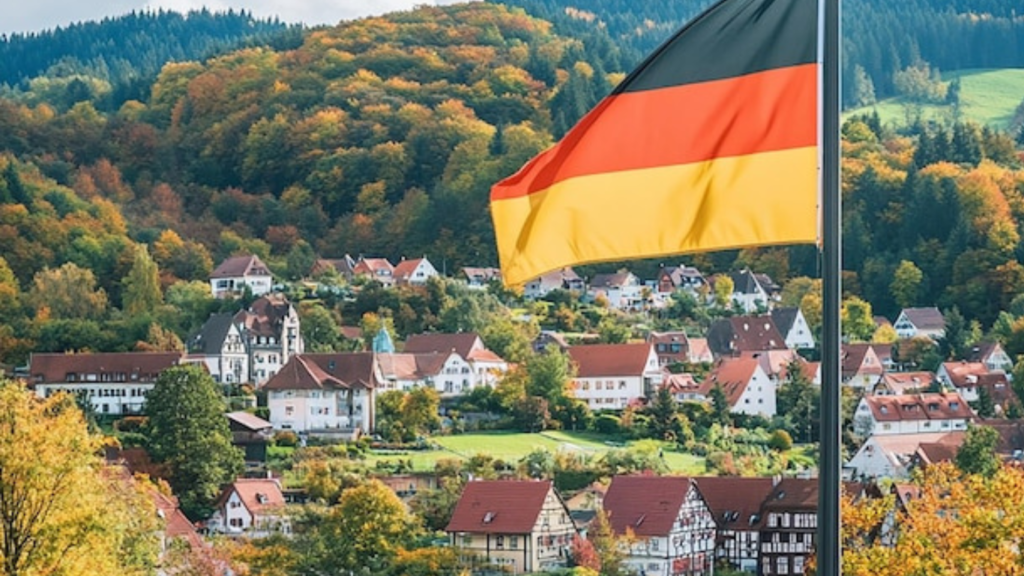Introduction: The Love for Dogs in Germany
Dogs have long held a special place in German hearts, seamlessly blending into daily life as loyal companions, family members, and even cultural icons. From bustling cities like Berlin to quaint villages in Bavaria, it’s common to see dogs welcomed in cafes, parks, and public transport, reflecting Germany’s deeply rooted pet-friendly ethos. With nearly 10 million registered dogs nationwide, the bond between Germans and their four-legged friends is undeniable.
This connection isn’t just about companionship—dogs here often participate in outdoor adventures, social events, and even contribute to community roles like therapy or service work. But with such a diverse array of breeds thriving in the country, many wonder: what is the most popular dog in Germany? While preferences vary by region and lifestyle, certain breeds consistently capture the nation’s admiration. From agile working dogs to affectionate family pets, Germany’s favorites reflect a blend of practicality, history, and personality.
Whether you’re a local dog lover or a curious about reader, uncovering the top choice offers a fascinating glimpse into how culture and canine companionship intersect. Let’s explore the breed that currently leads the pack and the reasons behind its enduring popularity.
Factors That Make a Dog Popular in Germany
When it comes to choosing a furry companion, Germans prioritize practicality and lifestyle compatibility. One key factor is temperament. Breeds are known for being calm, loyal, and family-friendly—like Labrador Retrievers or Golden Retrievers—often top the list, as they blend seamlessly into households with children or active individuals.

Size and adaptability also play a role. With many Germans living in apartments or urban areas, medium-to-small breeds like Dachshunds or French Bulldogs thrive due to their space-friendly needs and lower exercise demands. Cultural connection is another driver. Native breeds like the German Shepherd symbolize national pride, combining historical significance with versatile working traits.
Similarly, dogs with strong trainability and intelligence, such as Border Collies, appeal to owners who value obedience and mental stimulation. Health and longevity matter too—breeds with fewer genetic issues or longer lifespans, like the Poodle, are preferred for their cost-effectiveness and companionship durability.
Lastly, lifestyle trends influence popularity. The rise of outdoor activities and jogging culture has boosted the demand for energetic breeds like the Vizsla. Meanwhile, low-maintenance dogs, such as mixed breeds from shelters, are gaining traction among eco-conscious and busy urbanites. In Germany, a dog’s popularity isn’t just about looks—it’s about how well they fit into the rhythm of everyday life.
Most Popular Dog Breeds in Germany
When asking, “What is the most popular dog in Germany?” the answer shines brightly on the German Shepherd. Renowned for their intelligence, loyalty, and versatility, these dogs have captured the hearts of Germans for generations.
Originally bred in the late 19th century by Captain Max von Stephanitz to herd sheep, the breed quickly evolved into a symbol of strength and reliability. Today, German Shepherds dominate as household companions, working dogs, and national icons, reflecting their deep-rooted connection to Germany’s culture.
Their popularity isn’t just about heritage—it’s about adaptability. German Shepherds thrive in diverse roles, from police and military service to therapy and family guardianship. Their sharp minds make them highly trainable, while their protective yet gentle nature ensures they bond closely with families.
Whether accompanying hikers on forest trails or playing with children in suburban backyards, these dogs blend seamlessly into German lifestyles. Their striking appearance—athletic build, alert ears, and expressive eyes—adds to their charm, making them instantly recognizable. But what truly cements their status as Germany’s favorite is their unwavering loyalty.
German Shepherds form profound connections with their owners, embodying the ideal balance of courage and affection. For active households or professionals needing a reliable partner, this breed delivers unmatched companionship. So, when exploring “what is the most popular dog in Germany,” the German Shepherd isn’t just a breed—it’s a testament to the nation’s love for dogs that embody intelligence, versatility, and heart.
German Shepherd The Nation’s Favorite
When it comes to Germany’s favorite dog breed, the German Shepherd effortlessly claims the crown. Renowned for its intelligence, loyalty, and versatility, this breed has captured the hearts of millions, not just in its homeland but worldwide.

Originating in Germany in the late 19th century, the German Shepherd was initially bred for herding sheep, but its sharp mind and adaptable nature quickly made it a top choice for roles in police work, search-and-rescue missions, and even as trusted service animals.
What makes the German Shepherd so beloved in Germany? It’s a mix of strength and soul. These dogs are fiercely protective yet gentle with families, making them ideal companions for households.
Their athletic build, striking appearance, and expressive eyes reflect both power and warmth. German Shepherds thrive on mental and physical challenges, whether it’s learning new commands, playing with kids, or exploring the outdoors. They’re also deeply intuitive, often sensing their owner’s emotions, which strengthens the bond between pet and human.
Beyond their role as family pets, German Shepherds symbolize national pride. Their presence in German culture—from wartime heroes to modern-day working dogs—highlights their enduring legacy. For Germans, this breed isn’t just a pet; it’s a reflection of discipline, resilience, and loyalty.
Whether guarding a home, assisting authorities, or simply curling up on the couch, the German Shepherd remains a timeless favorite, embodying the spirit of its homeland with every wag of its tail.
| Description | Number/ Percentage |
| Total number of households (Germany) | million | | 42 |
| Percentage of households with dogs | 21% |
| Total pet dogs in Germany | 10.1 million |
| Number of households with dogs | million | 8.8 |
Other Top Dog Breeds Loved by Germans
Germany is a country known for its love of dogs, and among all the breeds, the German Shepherd stands out as the most popular. This intelligent and loyal breed has been a favorite among Germans for decades.
Originally bred for herding and guarding livestock, the German Shepherd is now widely used in police, military, and search-and-rescue operations. Their protective nature, intelligence, and trainability make them the perfect companion for families, professionals, and working environments.
Apart from their work abilities, German Shepherds are also great family pets. They are affectionate with their owners and highly protective of their homes. Their strong build, keen sense of smell, and high energy levels make them one of the most versatile dog breeds in the world.
In Germany, you will often see German Shepherds accompanying their owners on hikes, walks, and even at cafes, as they are widely accepted in public places.
However, owning a German Shepherd comes with responsibility. They need regular exercise, mental stimulation, and proper training from an early age. Despite the effort needed to care for them, German Shepherds remain the top choice for German dog lovers due to their intelligence, loyalty, and unwavering devotion.
Other Top Dog Breeds Loved by Germans
While the German Shepherd takes the top spot, Germans love many other dog breeds as well. Some of the most popular ones include the Dachshund, Labrador Retriever, Golden Retriever, Rottweiler, Boxer, and Poodle.

These breeds are cherished for their unique traits, whether it’s the playful nature of the Labrador, the courage of the Rottweiler, or the intelligence of the Poodle.
Germans have a deep connection with their pets, often treating them as family members. Many dogs in Germany are well-trained and socialized, making them excellent companions for both city dwellers and countryside residents.
Whether large working breeds or small companion dogs, German dog lovers ensure their furry friends get the best care and love.
Small vs. Large Breeds: What Do Germans Prefer
Germany’s love for dogs is no secret, but when it comes to choosing between small and large breeds, preferences often reflect lifestyle, practicality, and cultural ties. While both categories have loyal fans, recent trends and historical inclinations paint a fascinating picture of what Germans prioritize in their furry companions.
Small breeds like the Dachshund, affectionately called Dackel or Teckel, hold a special place in German culture. Originally bred for hunting, their compact size and bold personality make them ideal for apartment living, which is common in urban areas like Berlin or Munich.
Breeds like the Miniature Schnauzer or the lively Pomeranian also thrive in cities due to their adaptability and lower exercise needs. For singles, seniors, or busy professionals, smaller dogs often fit seamlessly into daily routines.
On the flip side, large breeds like the German Shepherd and Labrador Retriever remain wildly popular. The German Shepherd, a national icon, is prized for its intelligence, loyalty, and versatility as a working dog.
Families in suburban or rural areas often lean toward larger breeds for their protective instincts and active lifestyles. Breeds like the Rottweiler or Boxer also enjoy a strong following, reflecting Germany’s appreciation for robust, athletic dogs that excel in outdoor activities or roles like therapy or service work.
Interestingly, Germany’s preference isn’t strictly divided by size. Instead, it’s shaped by practicality—space, purpose, and the owner’s routine. Urbanization has boosted small breed popularity, but the timeless appeal of larger dogs as loyal partners ensures they remain a staple in many households.

Whether tiny or towering, German dog lovers prioritize temperament, health, and compatibility, proving that the “perfect breed” is less about size and more about finding the right fit for life’s adventures.
Why Are These Dog Breeds So Popular
When it comes to choosing a furry companion in Germany, certain dog breeds consistently steal the spotlight. The Labrador Retriever, German Shepherd, and Dachshund are among the nation’s favorites—and for good reason! These breeds combine traits that align perfectly with German lifestyles.
Labradors, known for their friendly nature and adaptability, thrive in both bustling cities and quiet countryside homes. Their patience and playfulness make them ideal for families, while their intelligence keeps them popular as service or therapy dogs.
German Shepherds, on the other hand, embody loyalty and versatility. Bred originally in Germany, they’re celebrated for their work ethic, whether as police dogs, search-and-rescue heroes, or devoted family protectors. Their trainability and calm confidence resonate with owners seeking both companionship and functionality.
Then there’s the Dachshund—Germany’s iconic “sausage dog.” Their compact size and bold personality make them a hit in urban apartments, while their hunting heritage appeals to those who love outdoor adventures. Beyond practicality, these breeds also carry cultural charm.
Many Germans take pride in owning native breeds like the Dachshund or German Shepherd, connecting to a sense of tradition. Ultimately, their popularity boils down to a mix of temperament, adaptability, and the ability to fit seamlessly into diverse lifestyles. Whether it’s a Labrador’s warmth, a Shepherd’s reliability, or a Dachshund’s spunky spirit, these dogs have mastered the art of winning hearts across Germany!
Choosing the Right Dog for a German Household
Bringing a dog into your home is a joyful commitment, but selecting the right breed requires thoughtful consideration of your lifestyle, space, and local climate. In Germany, where urban apartments coexist with sprawling countryside homes, matching a dog’s needs to your environment is key.
Active breeds like the German Shepherd or Dachshund thrive in homes with access to outdoor spaces, while smaller, low-energy dogs like the French Bulldog may adapt better to city living. Family dynamics matter, too. If you have children, breeds known for patience and playfulness, such as the Golden Retriever or Labrador, are excellent choices.
For singles or seniors, companion breeds like the Poodle or Shih Tzu offer loyalty without demanding intense exercise. Germany’s seasonal weather also plays a role: thick-coated breeds like the Bernese Mountain Dog handle cold winters well, while short-haired dogs may need extra warmth indoors.

Training and socialization are universal priorities. Breeds with high intelligence, like the Border Collie, require mental stimulation to stay happy, while independent breeds might suit owners comfortable with a more self-reliant pet.
Always research breed-specific traits or consult local breeders and shelters to find a dog that aligns with your routine and values. By prioritizing compatibility over trends, you’ll ensure a harmonious, lasting bond with your furry companion.
Conclusion: The Most Beloved Dog in Germany
When it comes to Germany’s favorite canine companion, the Labrador Retriever consistently steals hearts and tops popularity charts. Known for their friendly nature, intelligence, and adaptability, Labradors have become a staple in German households. Whether in bustling cities like Berlin or quiet countryside villages, these dogs thrive as family pets, service animals, and even loyal companions for outdoor enthusiasts.
Their gentle temperament makes them ideal for homes with children, while their eagerness to please ensures they excel in training—a trait Germans deeply value. But why the Labrador? Germany’s love for this breed isn’t just about their wagging tails or photogenic charm. It’s rooted in practicality.
Modern German lifestyles—often balancing urban living with a passion for nature—demand a dog that’s versatile. Labradors fit seamlessly into active routines, whether hiking in the Black Forest, playing in city parks, or simply lounging at home. They’re also low-maintenance compared to high-energy breeds, striking a perfect balance between playful and calm.
While native breeds like the German Shepherd hold cultural significance (and rank high in popularity), the Labrador’s universal appeal transcends borders. Their reputation as loyal, non-aggressive dogs aligns with Germany’s emphasis on responsible pet ownership and community harmony.
Additionally, their role as therapy and guide dogs highlights their societal value beyond being just pets. Ultimately, the Labrador Retriever’s blend of warmth, adaptability, and reliability makes it Germany’s most beloved dog.
But no matter the breed, what truly matters is the bond between owner and pet—a connection built on love, trust, and shared adventures. So, whether you’re Team Labrador or a fan of feisty Dachshunds, Germany’s dog-loving culture celebrates all furry friends who bring joy into our lives.
Read others also
Top 10 best dog breeds for protection and family 2025
Are Pitbulls Good with Kids? The Truth About Their Loyalty & Temperament
Why Does My Dog Always Want My Food? Decoding Canine Cravings
What do boxer dogs eat? A complete guide to their nutritional needs
FAQ
The national dog of Germany is the German Shepherd (Deutscher Schäferhund). Known for their intelligence, loyalty, and versatility, these dogs were originally bred in the late 19th century by Max von Stephanitz to herd sheep. Their strength, trainability, and protective nature made them popular beyond farming—today, they’re widely used as police dogs, search-and-rescue heroes, service animals, and beloved family pets.
Though not officially declared by law, the German Shepherd is deeply tied to Germany’s cultural identity, symbolizing traits like discipline and reliability. Their iconic appearance and noble demeanor have also made them one of the world’s most recognized and respected dog breeds!
A female German Shepherd typically lives between 9 to 13 years, though some may live longer with excellent care. Genetics, diet, exercise, and regular vet check-ups play a big role in their lifespan. Keeping them at a healthy weight, providing mental stimulation, and addressing breed-specific health issues like hip dysplasia early can help them thrive. Spaying can also reduce risks of certain cancers.
While females may live slightly longer than males on average, individual care and environment matter most. Regular love, attention, and preventive health measures ensure they stay happy and healthy throughout their years. Every dog is unique, so focus on quality care to maximize their time with you!
German Shepherds, while loyal and intelligent, have a few weaknesses to consider. Their active nature means they need regular exercise and mental stimulation; without it, they can become bored or destructive. They’re prone to health issues like hip and elbow dysplasia due to their genetics, so responsible breeding is key.
Some may develop anxiety if left alone too long, as they thrive on companionship. Their protective instincts can lead to over-guarding behaviors if not socialized early. Lastly, their double coat sheds heavily, requiring frequent grooming. With proper care, training, and attention, these challenges can be managed, ensuring a happy, healthy companion.
The most popular dog breed from Germany is the German Shepherd. Known for their intelligence, loyalty, and versatility, these dogs excel in roles like police work, search-and-rescue, and as family companions. Their confident nature and trainability make them a global favorite. Another iconic German breed is the Dachshund, famous for its long body and spirited personality, often called a “sausage dog.”
Rottweilers and Dobermans also originate from Germany, valued for their strength and protective instincts. German Shepherds, however, stand out for their adaptability—they’re equally comfortable working hard or cuddling at home. Their blend of courage and affection explains why they’re cherished worldwide as both heroes and loving pets.

